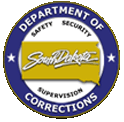Juvenile Corrections
Performance-based standards project
Performance-based Standards (PbS) is a data-driven improvement model grounded in research that holds juvenile justice agencies, facilities and residential care providers to the highest standards for operations, programs and services. PbS believes youth-serving agencies should be challenged to deliver effective and safe rehabilitation and reentry services and PbS provides a uniform data collection and reporting tool that shows the impact of the services on youths, staff and families. PbS was launched in 1995 by the US Department of Justice, Office of Justice Programs, Office of Juvenile Justice and Delinquency Prevention (OJJDP) to improve the deplorable conditions reported by the 1994 Conditions of Confinement Study. The PbS Learning Institute incorporated in 2004 to continue PbS and its commitment to treating all youths in custody as one of our own when federal funding ended. PbS is a field-supported and self-sustaining continuous learning and improvement program available to all residential programs serving youths across the country.
The PbS data-driven improvement model provides:
- A set of goals and standards that agencies, facilities and residential care providers strive to meet;
- A blueprint of best practices and policies to implement to meet the standards;
- Outcome reports and data summaries of the quantitative and qualitative information collected;
- An improvement plan template guiding steps necessary to use the outcomes and information to create successful and sustainable reforms;
- A national network of professionals sharing information, tools and approaches to provide the highest quality of life and services; and
- Training, technical assistance, expert coaching, research and resources to support PbS’ integration.
PbS’ goal is to integrate best and research-based practices into daily operations to create safe and healthy facilities and programs that effectively improve the lives of delinquent and at-risk youths, families and communities and prevent future crime. PbS provides support to participants through a variety of training and technical assistance, online resources and the PbS HelpDesk. Additionally, participants work with a PbS coach, a field expert who provides guidance and support to successfully implement PbS.
Benefits of participation include:
- The ability to measure and track key indicators of performance;
- Comparison with similar participants across the country;
- Definition of measurable goals and development of strategies to achieve them;
- Access to resources and assistance to make improvements;
- Survey kiosks to collect information from youths, staff and families; and
- Accountability and transparency through high-quality standardized national data.
PbS asks participants to collect information from records, reports and interviews of youths, staff and families. The data undergoes a rigorous quality assurance process and is reported back to the participants as outcome measures that show change over time and individual participants’ performance compared to the average of the field of all participants. Working with PbS coaches, participants use the data to identify areas that need improvement and develop a detailed improvement plan. The plan is monitored in future data collections, adjusted as needed, until the desired improvement is achieved and sustained.
The South Dakota Department of Corrections was accepted into the Performance-based Standards Project in April 2001. Currently, South Dakota has three facilities at the State Treatment and Rehabilitation Academy (STAR) near Custer participating in the PbS project, and have integrated into the project the community-based juvenile corrections agents in regards to reintegration standards. Governor Mike Rounds and Gov. Dennis Daugaard have both issued executive orders requiring the state to participate in the project and report regularly on the results to the state legislature.
The data collected is included in an annual report to the Governor and Legislature. This report provides a summary of each program and their performance as it relates to the outcome measures. It also shows the graph reports of each program performance and how it compares to the other facility sites that participate in the project.
The information below is posted in the Adobe Reader format. To download a free copy of Adobe Reader click here.
| 2015 PbS Report |
| 2014 PbS Report |
| 2013 PbS Report |
| 2012 PbS Report |
| 2011 PbS Report |
| 2010 PbS Report |
| 2009 PbS Report |
| 2008 PbS Report |

